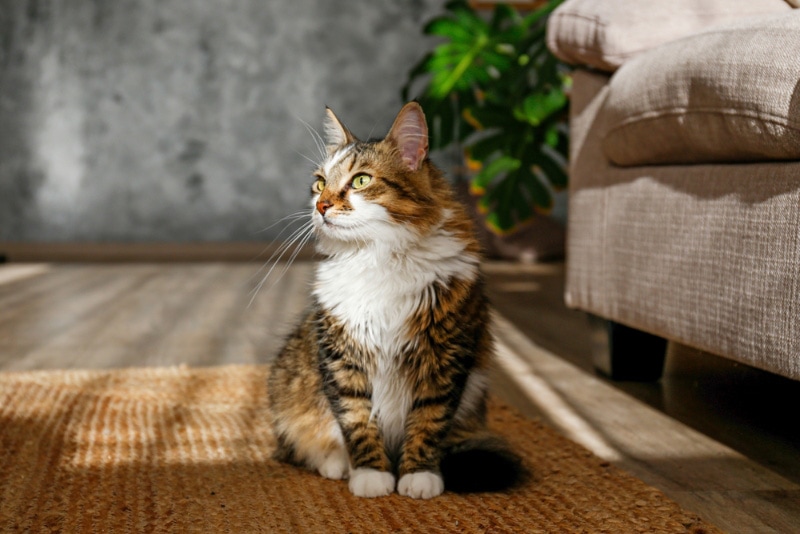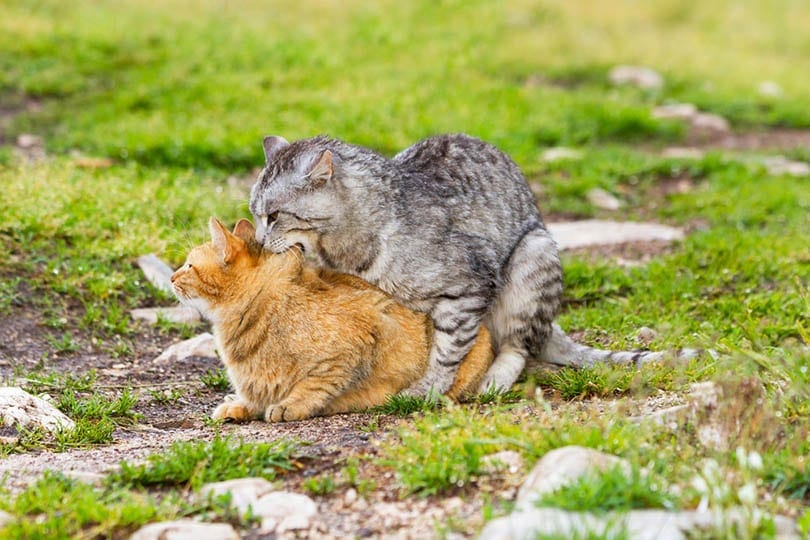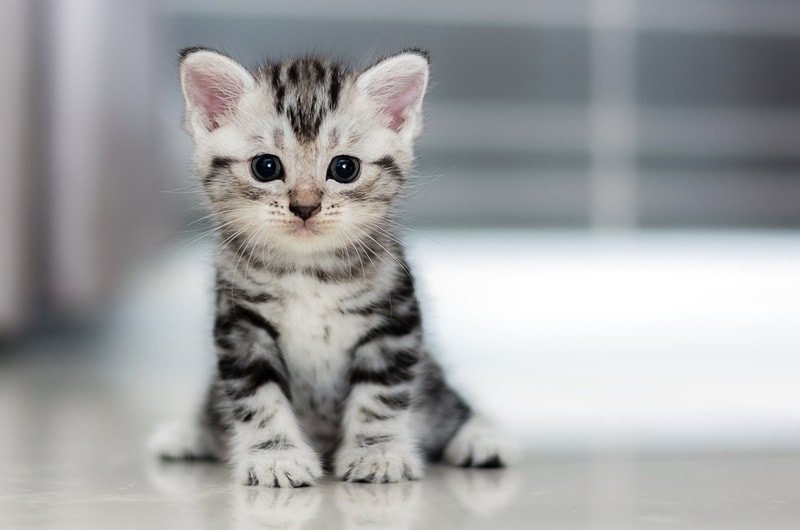British Shorthair vs Scottish Fold Cats: The Differences (With Pictures)
Updated on
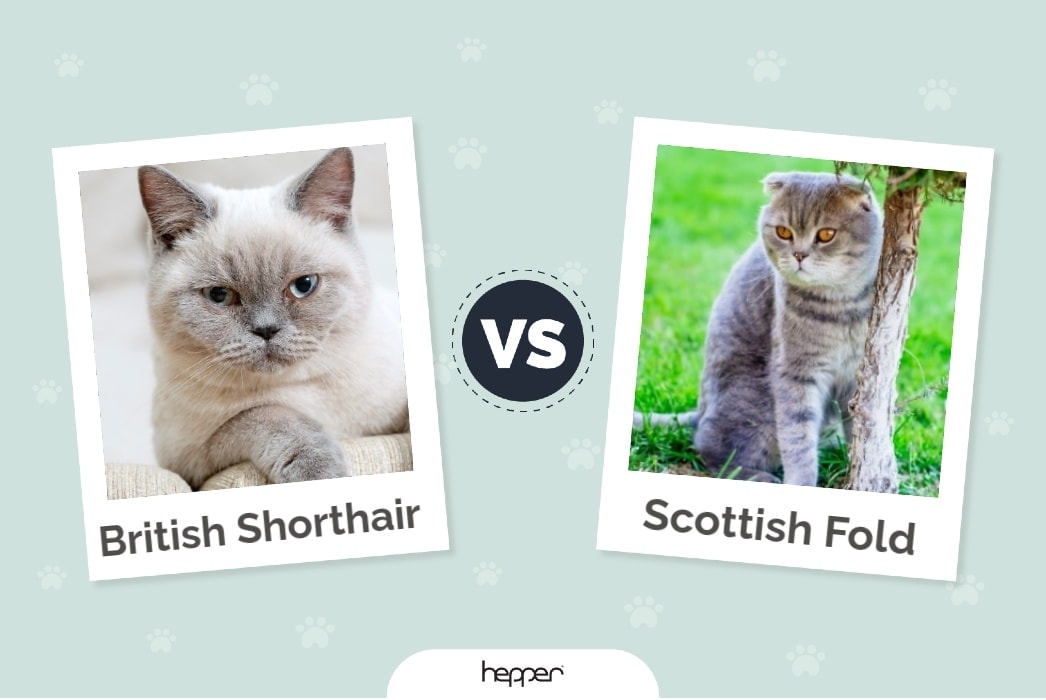
Click to Skip Ahead
If you love these two breeds and are thinking of adding one to your family but are having a challenging time choosing between them, you’ve come to the right place. We know how important it is to find a cat that will be a perfect fit for your household. You don’t necessarily want a shy cat in a noisy house or a highly energetic cat with a quiet and laid-back family.
We look at the differences and similarities between these two breeds—everything from appearance to personality. This way, you’ll be able to compare and contrast and (hopefully) make an informed decision.
Visual Differences
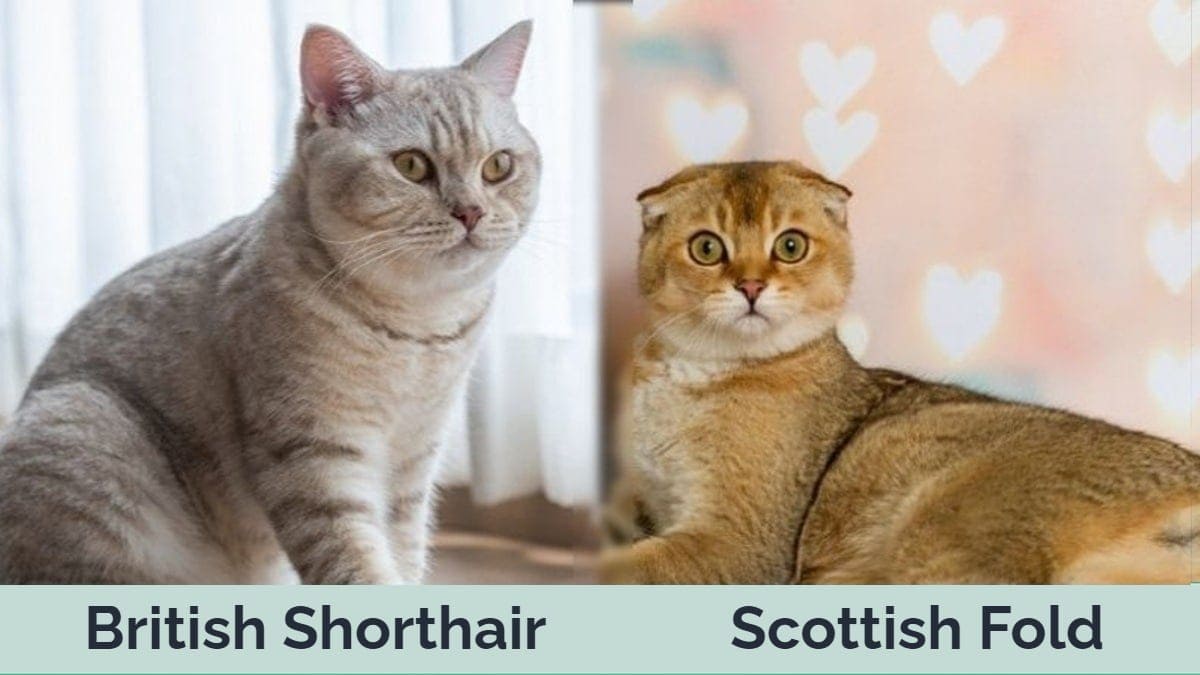
At a Glance
- Origin: Great Britain
- Size: 8–16 pounds
- Lifespan: 12–20 years
- Temperament: Calm, independent, loving
- Origin: Scotland
- Size: 7–10 pounds
- Lifespan: 11–14+ years
- Temperament: Loyal, inquisitive, intelligent
British Shorthair Overview
While the British Shorthair does come from England, their origins stretch as far back as the Roman Conquest in 43 A.D. when the Romans invaded Great Britain. The Romans brought cats with them to protect their food supplies from pests.
These cats stayed behind and eventually became common stray and farm cats, where they developed into an independent and hardy breed.
But cat breeder Harrison Wier in the late 1800s started breeding the British Shorthair into what we see today.
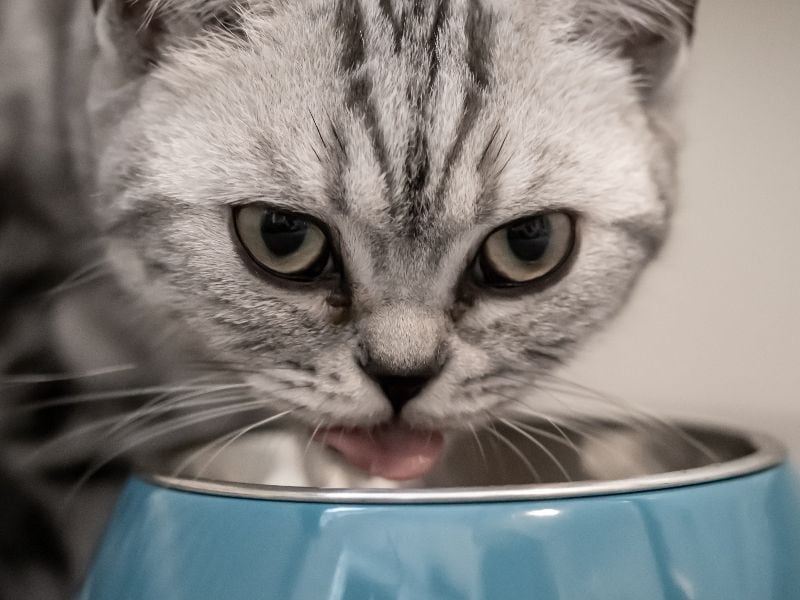
Characteristics & Appearance
British Shorthairs are medium-sized to large cats that come in various colors but are most famous for their blue coats. Their blue (really, gray) coats are thick and plush. They also come in solid black, red, white, and cream. They can be bi-colored, calico, smoke, tabby, and shaded.
Their eyes are commonly a deep orange color, but they can also be blue, green, or gold, as well as odd-eyed (this can be partially dependent on coat color).
The build of the British Shorthair is solid and heavily boned. This cat has an adorable round face, with large round eyes and round full cheeks. While they tend to look like compact cats, they can be surprisingly heavy.
Temperament
British Shorthairs are calm cats that prefer to sleep next to you rather than on a lap. The history of these cats can give you an idea of their personalities today. They are an independent breed that is quite self-sufficient, and while they are calm and laidback in general, they do get the occasional zoomies like any other cat.
They love a good cuddle as long as it’s next to you and prefer not to be handled much, and they don’t like being picked up and carried. They can come across as rather aloof, but they’ll enjoy your company and greet you when you get home—they just don’t pine while you’re gone.
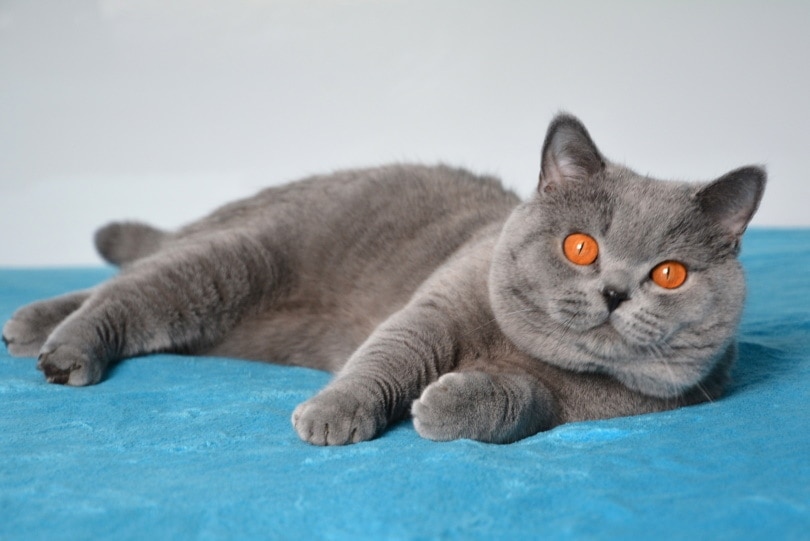
Scottish Fold Overview
The Scottish Fold hasn’t been around for nearly as long as the British Shorthair. The first-ever Scottish Fold was a barn cat called Susie, discovered in 1961 in Scotland. Susie was a solid white, longhaired cat that was bred with other cats, such as the American and British Shorthairs, as well as Persians and Burmese.
This breeding has led to a cat that comes in a wide variety of appearances. But all these cats can have their ancestry traced back to the original Scottish Fold, Susie.
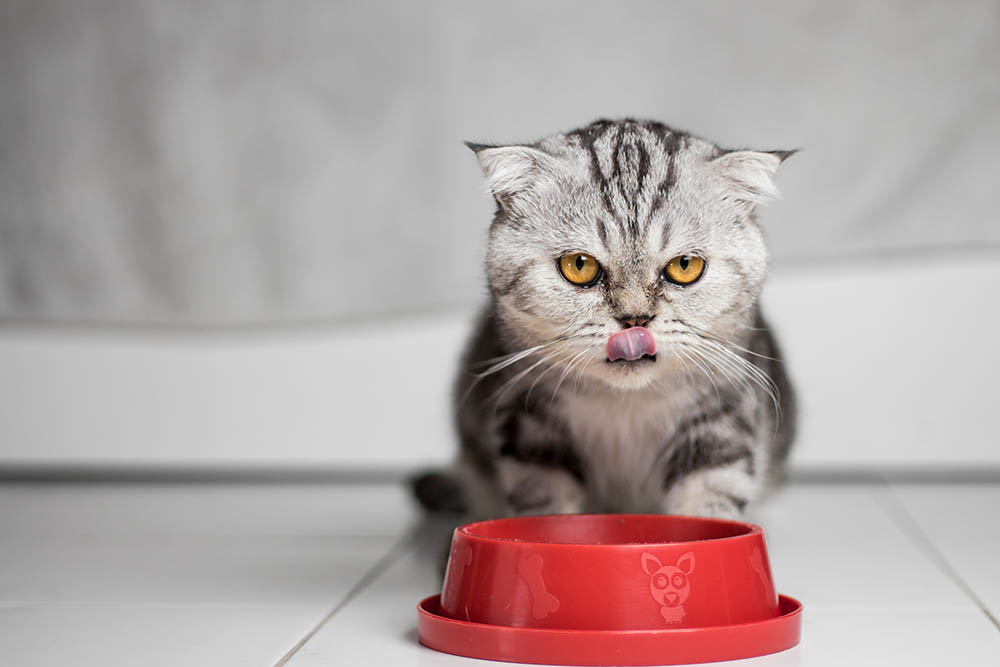
Characteristics & Appearance
Scottish Folds have been bred with various other breeds and have many different appearances. But the one thing that they all have in common is the folded ears. However, the kittens are not born with folded ears—the ears start to fold over when they reach about 3 or 4 weeks of age.
Scottish Folds are medium-sized and can have both folded and straight ears—the folded ear is actually a genetic mutation. They can be longhaired and shorthaired and be almost every cat color that you can imagine.
Similar to the British Shorthair, they tend to be round in their appearance. They have round eyes, round faces, and round cheeks—combine their large round eyes with their folded ears, and you’ve got yourself an “owl cat”!
Temperament
Scottish Folds are also calm and laidback cats that are quite devoted to their families. They are Velcro cats and they will stick to you whether you’re lounging on the couch or wandering around the house.
They are also adaptable cats and they can handle noisy and busy households and calm ones. They aren’t that active and are quiet cats, but they are also curious and intelligent.
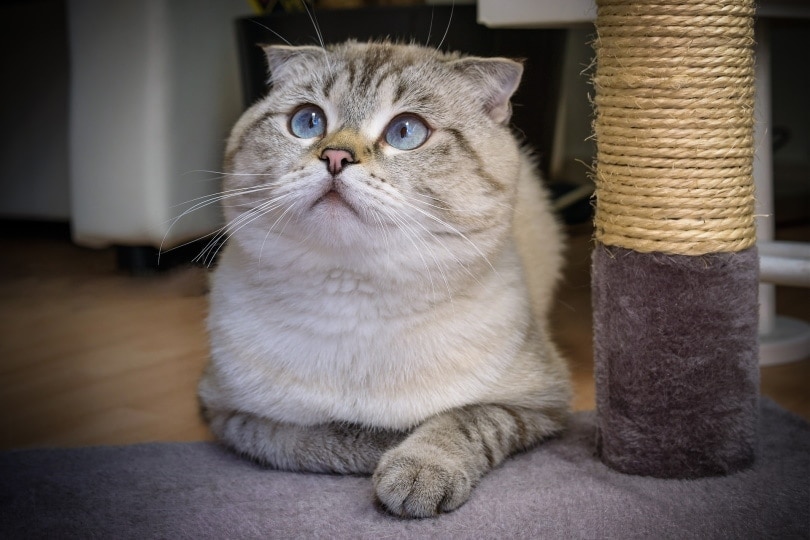
What Are the Differences Between the British Shorthair and Scottish Fold?
The British Shorthair is usually a larger and heavier cat than the Scottish Fold, and of course, they don’t have folded ears. They are typically blue in color, but similar to the Scottish Fold, they can come in a range of colors.
The British Shorthair is a more independent cat than the Scottish Fold, and they’re a little more hands-off with their affection. This doesn’t mean they’re not affectionate at all; they just prefer it on their own terms and without much cuddling and being picked up.
Both breeds are quiet, and the British Shorthair is not attention-seeking, but they do become just as attached to their owners as the Scottish Fold.
The Scottish Fold can have a variety of different coat lengths. The British Shorthair has a thick and short coat that needs combing about once a week. The same level of care should be given to the shorthaired Scottish Fold, but if you have a longhaired one, they need combing several times a week.
Scottish Folds have more health issues than British Shorthairs. They tend to eat more, and their lack of activity makes them more prone to obesity. Scottish Folds also suffer from a degenerative joint disease, which is what causes their ears to fold. This disease can affect their tails, ankles, and feet. Their tails can be highly sensitive and should never be pulled or played with in any way. They are more likely to develop arthritis because of this.
Finally, both breeds are not active cats. They will both play, but the British Shorthair will show a little less enthusiasm for playtime than the Scottish Fold. The Scottish Fold does seem to get along well with other people and animals (as long as they are cat-friendly), whereas the British Shorthair will usually just tolerate them.
Which Breed Is Right for You?
Now that you’ve learned more about these two breeds, you should have a better idea of which one sounds like the better fit for you and your family.
If you’re looking for a low-maintenance cat, the British Shorthair might be the better fit. You can leave them alone for longer periods, they won’t look for much attention, and they don’t have the same health problems as Scottish Folds. Scottish Folds don’t like being left alone for long, but they should be happy if there’s another cat or dog around to keep them company. So, if you want a cat that requires your complete attention and love most of the time, go for the Scottish Fold.
However, in the long run, they’re beautiful cats that are devoted and loving, so either one would be an amazing companion.
- See also: How Much Does a Scottish Fold Cost?
Featured Image Credit: Left: British Shorthair Cat, NickSu, Shutterstock | Right: Scottish Fold Cat, Nadiia Rotman, Shutterstock

